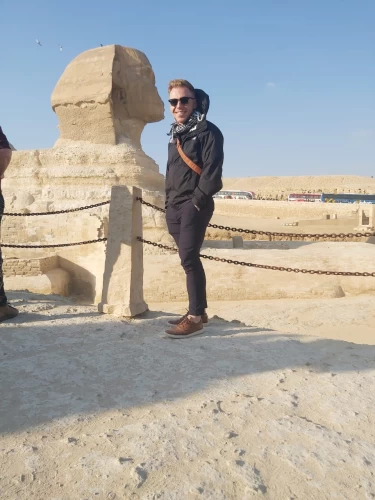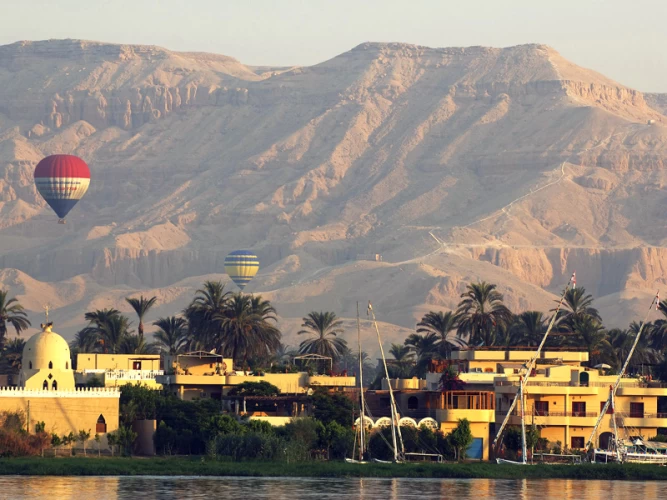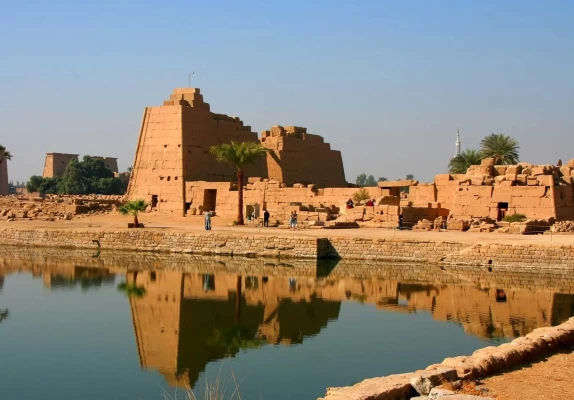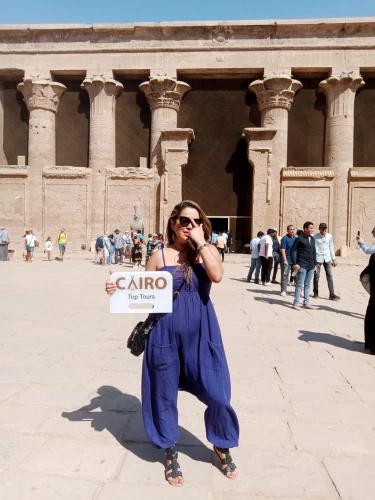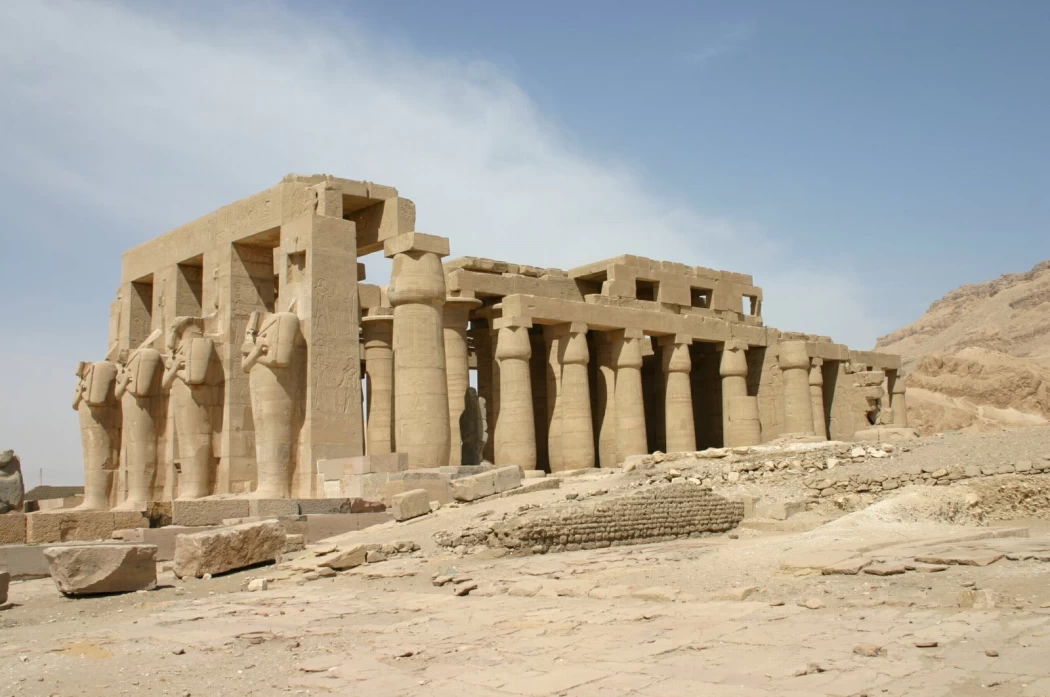
The Ramesseum in Luxor
Ramses II Temple in Luxor Egypt
Ramses II of the New Kingdom, who ruled Egypt for about 67 years during the 19th dynasty, built this funerary temple to assert its eternal greatness and proclaim its glory. The vast complex that was built more than 20 years ago today is almost all in ruins and was amazing.
The Ramesseum originally consisted of a central temple flanked by two small shrines dedicated to the mother, Tuya, who was the wife of Seti I, and his beloved wife, Queen Nefertari, a royal palace, and some deposits.
The Ramesseum in Luxor
Dedicated to God Amun, it housed the colossal statue of Ramses II, almost 20 meters high and weighing about 1000 tons. From the huge fallen statue, today only a few scattered fragments remain.
Its structure also inspired the temple of Medinet Habu, later built by Ramses III. To better understand the architecture of the Ramesseum, it is advisable to first visit the temple of Medinet Habu, where visitors see the building as originally designed, with front access, from the first pylon, while at the Ramesseum the entrance is on the side, through the second courtyard.
Temple of Madinet Habu
The Ramesseum temple contains some inscriptions that tell of the nature of life in this period of the Pharaonic state, as the images and inscriptions that decorate the temple wall recount the facts of the famous Battle of Kadesh in which King Ramses II defeated the Hittites and how he planned the war.
Our remarkable sites and places didn't stop here; there is the tomb of Nefertari. The tomb was discovered in 1904, and after a while, archaeologists discovered that the paintings of the tomb were damaged, which is the reason for the formation of salts above the plates. Water falling between the walls and the occurrence of bacterial growth. The humidity of the air is generated by the breath of visitors.
You can learn about a special place called the Merneptah Mortuary Temple, where you can feel and experience the amazingness of ancient Egypt.







